#Isabella of Angoulême
Text
"Isabella of Angoulême: A Tale of Power, Love, and Ambition"
Step into the captivating world of Isabella of Angoulême, a tale of power, love, and ambition. Follow Isabella's remarkable journey from a young, spirited princess to a formidable queen, navigating treacherous courts and forging alliances. With its rich historical backdrop, this enchanting storybook invites you to discover the captivating life of one of the most intriguing women in medieval history. Available now, don't miss your chance to embark on this captivating adventure.
1 note
·
View note
Text
Below the cut I have made a list of each English and British monarch, the age of their mothers at their births, and which number pregnancy they were the result of. Particularly before the early modern era, the perception of Queens and childbearing is quite skewed, which prompted me to make this list. I started with William I as the Anglo-Saxon kings didn’t have enough information for this list.
House of Normandy
William I (b. c.1028)
Son of Herleva (b. c.1003)
First pregnancy.
Approx age 25 at birth.
William II (b. c.1057/60)
Son of Matilda of Flanders (b. c.1031)
Third pregnancy at minimum, although exact birth order is unclear.
Approx age 26/29 at birth.
Henry I (b. c.1068)
Son of Matilda of Flanders (b. c.1031)
Fourth pregnancy at minimum, more likely eighth or ninth, although exact birth order is unclear.
Approx age 37 at birth.
Matilda (b. 7 Feb 1102)
Daughter of Matilda of Scotland (b. c.1080)
First pregnancy, possibly second.
Approx age 22 at birth.
Stephen (b. c.1092/6)
Son of Adela of Normandy (b. c.1067)
Fifth pregnancy, although exact birth order is uncertain.
Approx age 25/29 at birth.
Henry II (b. 5 Mar 1133)
Son of Empress Matilda (b. 7 Feb 1102)
First pregnancy.
Age 31 at birth.
Richard I (b. 8 Sep 1157)
Son of Eleanor of Aquitaine (b. c.1122)
Sixth pregnancy.
Approx age 35 at birth.
John (b. 24 Dec 1166)
Son of Eleanor of Aquitaine (b. c.1122)
Tenth pregnancy.
Approx age 44 at birth.
House of Plantagenet
Henry III (b. 1 Oct 1207)
Son of Isabella of Angoulême (b. c.1186/88)
First pregnancy.
Approx age 19/21 at birth.
Edward I (b. 17 Jun 1239)
Son of Eleanor of Provence (b. c.1223)
First pregnancy.
Age approx 16 at birth.
Edward II (b. 25 Apr 1284)
Son of Eleanor of Castile (b. c.1241)
Sixteenth pregnancy.
Approx age 43 at birth.
Edward III (b. 13 Nov 1312)
Son of Isabella of France (b. c.1295)
First pregnancy.
Approx age 17 at birth.
Richard II (b. 6 Jan 1367)
Son of Joan of Kent (b. 29 Sep 1326/7)
Seventh pregnancy.
Approx age 39/40 at birth.
House of Lancaster
Henry IV (b. c.Apr 1367)
Son of Blanche of Lancaster (b. 25 Mar 1342)
Sixth pregnancy.
Approx age 25 at birth.
Henry V (b. 16 Sep 1386)
Son of Mary de Bohun (b. c.1369/70)
First pregnancy.
Approx age 16/17 at birth.
Henry VI (b. 6 Dec 1421)
Son of Catherine of Valois (b. 27 Oct 1401)
First pregnancy.
Age 20 at birth.
House of York
Edward IV (b. 28 Apr 1442)
Son of Cecily Neville (b. 3 May 1415)
Third pregnancy.
Age 26 at birth.
Edward V (b. 2 Nov 1470)
Son of Elizabeth Woodville (b. c.1437)
Sixth pregnancy.
Approx age 33 at birth.
Richard III (b. 2 Oct 1452)
Son of Cecily Neville (b. 3 May 1415)
Eleventh pregnancy.
Age 37 at birth.
House of Tudor
Henry VII (b. 28 Jan 1457)
Son of Margaret Beaufort (b. 31 May 1443)
First pregnancy.
Age 13 at birth.
Henry VIII (b. 28 Jun 1491)
Son of Elizabeth of York (b. 11 Feb 1466)
Third pregnancy.
Age 25 at birth.
Edward VI (b. 12 Oct 1537)
Son of Jane Seymour (b. c.1509)
First pregnancy.
Approx age 28 at birth.
Jane (b. c.1537)
Daughter of Frances Brandon (b. 16 Jul 1517)
Third pregnancy.
Approx age 20 at birth.
Mary I (b. 18 Feb 1516)
Daughter of Catherine of Aragon (b. 16 Dec 1485)
Fifth pregnancy.
Age 30 at birth.
Elizabeth I (b. 7 Sep 1533)
Daughter of Anne Boleyn (b. c.1501/7)
First pregnancy.
Approx age 26/32 at birth.
House of Stuart
James I (b. 19 Jun 1566)
Son of Mary I of Scotland (b. 8 Dec 1542)
First pregnancy.
Age 23 at birth.
Charles I (b. 19 Nov 1600)
Son of Anne of Denmark (b. 12 Dec 1574)
Fifth pregnancy.
Age 25 at birth.
Charles II (b. 29 May 1630)
Son of Henrietta Maria of France (b. 25 Nov 1609)
Second pregnancy.
Age 20 at birth.
James II (14 Oct 1633)
Son of Henrietta Maria of France (b. 25 Nov 1609)
Fourth pregnancy.
Age 23 at birth.
William III (b. 4 Nov 1650)
Son of Mary, Princess Royal (b. 4 Nov 1631)
Second pregnancy.
Age 19 at birth.
Mary II (b. 30 Apr 1662)
Daughter of Anne Hyde (b. 12 Mar 1637)
Second pregnancy.
Age 25 at birth.
Anne (b. 6 Feb 1665)
Daughter of Anne Hyde (b. 12 Mar 1637)
Fourth pregnancy.
Age 27 at birth.
House of Hanover
George I (b. 28 May 1660)
Son of Sophia of the Palatinate (b. 14 Oct 1630)
First pregnancy.
Age 30 at birth.
George II (b. 9 Nov 1683)
Son of Sophia Dorothea of Celle (b. 15 Sep 1666)
First pregnancy.
Age 17 at birth.
George III (b. 4 Jun 1738)
Son of Augusta of Saxe-Gotha (b. 30 Nov 1719)
Second pregnancy.
Age 18 at birth.
George IV (b. 12 Aug 1762)
Son of Charlotte of Mecklenburg-Strelitz (b. 19 May 1744)
First pregnancy.
Age 18 at birth.
William IV (b. 21 Aug 1765)
Son of Charlotte of Mecklenburg-Strelitz (b. 19 May 1744)
Third pregnancy.
Age 21 at birth.
Victoria (b. 24 May 1819)
Daughter of Victoria of Saxe-Coburg-Saafield (b. 17 Aug 1786)
Third pregnancy.
Age 32 at birth.
Edward VII (b. 9 Nov 1841)
Daughter of Victoria of the United Kingdom (b. 24 May 1819)
Second pregnancy.
Age 22 at birth.
House of Windsor
George V (b. 3 Jun 1865)
Son of Alexandra of Denmark (b. 1 Dec 1844)
Second pregnancy.
Age 20 at birth.
Edward VIII (b. 23 Jun 1894)
Son of Mary of Teck (b. 26 May 1867)
First pregnancy.
Age 27 at birth.
George VI (b. 14 Dec 1895)
Son of Mary of Teck (b. 26 May 1867)
Second pregnancy.
Age 28 at birth.
Elizabeth II (b. 21 Apr 1926)
Daughter of Elizabeth Bowes-Lyon (b. 4 Aug 1900)
First pregnancy.
Age 25 at birth.
Charles III (b. 14 Nov 1948)
Son of Elizabeth II of the United Kingdom (b. 21 Apr 1926)
First pregnancy.
Age 22 at birth.
377 notes
·
View notes
Text
i've not even watched this but the pictures i see of léa seydoux as isabella of angoulêm give major book!alicent energy




#alicent hightower#after episode 7 having this vibe would have been amazing#like fuck everyone i'll do things MY way
36 notes
·
View notes
Text
Ages of English Queens at First Marriage
I have only included women whose birth dates and dates of marriage are known within at least 1-2 years, therefore, this is not a comprehensive list. For this reason, women such as Philippa of Hainault and Anne Boleyn have been omitted.
This list is composed of Queens of England when it was a sovereign state, prior to the Acts of Union in 1707. Using the youngest possible age for each woman, the average age at first marriage was 17.
Eadgifu (Edgiva/Ediva) of Kent, third and final wife of Edward the Elder: age 17 when she married in 919 CE
Ælfthryth (Alfrida/Elfrida), second wife of Edgar the Peaceful: age 19/20 when she married in 964/965 CE
Emma of Normandy, second wife of Æthelred the Unready: age 18 when she married in 1002 CE
Ælfgifu of Northampton, first wife of Cnut the Great: age 23/24 when she married in 1013/1014 CE
Edith of Wessex, wife of Edward the Confessor: age 20 when she married in 1045 CE
Matilda of Flanders, wife of William the Conqueror: age 20/21 when she married in 1031/1032 CE
Matilda of Scotland, first wife of Henry I: age 20 when she married in 1100 CE
Adeliza of Louvain, second wife of Henry I: age 18 when she married in 1121 CE
Matilda of Boulogne, wife of Stephen: age 20 when she married in 1125 CE
Empress Matilda, wife of Henry V, HRE, and later Geoffrey V of Anjou: age 12 when she married Henry in 1114 CE
Eleanor of Aquitaine, first wife of Louis VII of France and later Henry II of England: age 15 when she married Louis in 1137 CE
Isabella of Gloucester, first wife of John Lackland: age 15/16 when she married John in 1189 CE
Isabella of Angoulême, second wife of John Lackland: between the ages of 12-14 when she married John in 1200 CE
Eleanor of Provence, wife of Henry III: age 13 when she married Henry in 1236 CE
Eleanor of Castile, first wife of Edward I: age 13 when she married Edward in 1254 CE
Margaret of France, second wife of Edward I: age 20 when she married Edward in 1299 CE
Isabella of France, wife of Edward II: age 13 when she married Edward in 1308 CE
Anne of Bohemia, first wife of Richard II: age 16 when she married Richard in 1382 CE
Isabella of Valois, second wife of Richard II: age 6 when she married Richard in 1396 CE
Joanna of Navarre, wife of John IV of Brittany, second wife of Henry IV: age 18 when she married John in 1386 CE
Catherine of Valois, wife of Henry V: age 19 when she married Henry in 1420 CE
Margaret of Anjou, wife of Henry VI: age 15 when she married Henry in 1445 CE
Elizabeth Woodville, wife of Sir John Grey and later Edward IV: age 15 when she married John in 1452 CE
Anne Neville, wife of Edward of Lancaster and later Richard III: age 14 when she married Edward in 1470 CE
Elizabeth of York, wife of Henry VII: age 20 when she married Henry in 1486 CE
Catherine of Aragon, wife of Arthur Tudor and later Henry VIII: age 15 when she married Arthur in 1501 CE
Jane Seymour, third wife of Henry VIII: age 24 when she married Henry in 1536 CE
Anne of Cleves, fourth wife of Henry VIII: age 25 when she married Henry in 1540 CE
Catherine Howard, fifth wife of Henry VIII: age 17 when she married Henry in 1540 CE
Jane Grey, wife of Guildford Dudley: age 16/17 when she married Guildford in 1553 CE
Mary I, wife of Philip II of Spain: age 38 when she married Philip in 1554 CE
Anne of Denmark, wife of James VI & I: age 15 when she married James in 1589 CE
Henrietta Maria of France, wife of Charles I: age 16 when she married Charles in 1625 CE
Catherine of Braganza, wife of Charles II: age 24 when she married Charles in 1662 CE
Anne Hyde, first wife of James II & VII: age 23 when she married James in 1660 CE
Mary of Modena, second wife of James II & VII: age 15 when she married James in 1673 CE
Mary II of England, wife of William III: age 15 when she married William in 1677 CE
106 notes
·
View notes
Photo
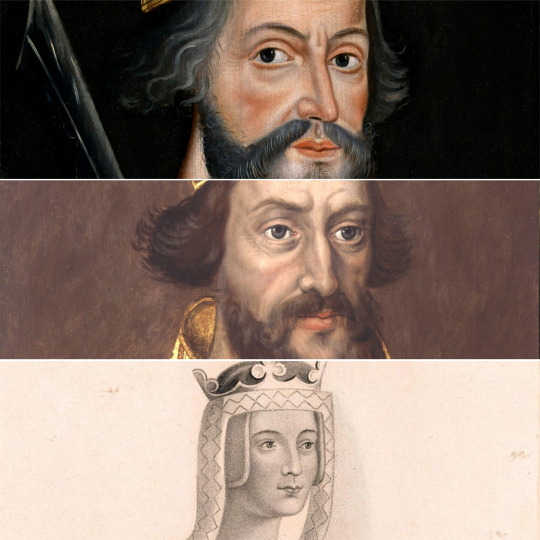


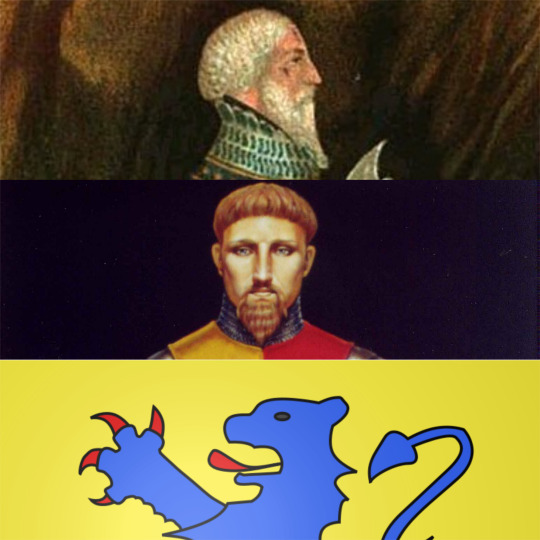






William, The Conqueror to Catherine, The Princess of Wales
⤜ The Princess of Wales is William I's 27th Great-Granddaughter via her paternal grandfather’s line.
William the Conqueror (m. Matilda of Flanders)
Henry I, King of England (m. Matilda of Scotland)
Empress Matilda (m. Geoffrey V, Count of Anjou)
Henry II, King of England (m. Eleanor of Aquitaine)
John I, King of England (m. Isabella of Angoulême)
Henry III, King of England (m. Eleanor of Provence)
Edmund, Earl of Lancaster (m. Blanche of Artois)
Henry, 3rd Earl of Leicester and Lancaster (m. Matilda de Chaworth)
Mary of Lancaster, Baroness Percy (m. Henry de Percy, 3rd Lord Percy) - Coat of Arms
Sir Henry Percy, 1st Earl of Northumberland (m. Margaret de Neville)
Sir Henry ‘Hotspur’ Percy (m. Elizabeth Mortimer)
Sir Henry Percy, 2nd Earl of Northumberland (m. Lady Eleanor Neville) - Coat of Arms
Sir Henry Percy, 3rd Earl of Northumberland (m. Eleanor, Baroness Poynings) - Coat of Arms
Lady Margaret Percy (m. Sir William Gascoigne)
Agnes Gascoigne (m. Sir Thomas Fairfax) - Gawthorpe Hall, family seat.
William Fairfax (m. Anne Baker) - Gilling Castle, family seat.
John Fairfax (m. Mary Birch) Master of the Great Hospital at Norwich, Norfolk
Rev. Benjamin Fairfax (m. Sarah Galliard), Preacher at Rumburgh, Suffolk.
Benjamin Fairfax (m. Bridget Stringer) died in Halesworth, Suffolk.
Sarah Fairfax (m. Rev. John Meadows) died in Ousedon, Suffolk.
Philip Meadows (m. Margaret Hall)
Sarah Meadows (m. Dr. David Martineau)
Thomas Martineau (m. Elizabeth Rankin) buried at Rosary Cemetery, Norwich.
Elizabeth Martineau (m. Dr. Thomas Michael Greenhow) died in Newcastle upon Tyne, Northumberland.
Frances Elizabeth Greenhow (m. Francis Lupton)
Francis Martineau Lupton (m. Harriet Albina Davis)
Olive Christina Lupton (m. Richard Noel Middleton)
Peter Francis Middleton (m. Valerie Glassborow)
Michael Francis Middleton (m. Carole Elizabeth Goldsmith)
The Princess of Wales m. The Prince of Wales
#this took wayyy to long#princess of wales#william the conqueror#history#ancestry#pictures#people#brf#british royal family#empress matilda#henry ii#henry i#john i#king of england#henry iii#hotspur#KTD
102 notes
·
View notes
Note
are there any books you'd recommend for Isabelle of Angouleme?
Hi! I’m really not an expert on Isabella of Angouleme so I'm probably not the best person to ask for recommendations for her. Here are some I've heard of, though I haven't read all of them:
"Isabella of Angouleme: John's Jezebel" by Nicholas Vincent (King John: New Interpretations). I haven't read it myself but I've heard good things!
“Maternal Abandonment and Surrogate Caregivers: Isabella of Angoulême and Her Children by King John” by Louise J. Wilkinson (Virtuous or Villainess? The Image of the Royal Mother from the Early Medieval to the Early Modern Era). It focuses more-so on Isabella's tenure as queen, the period shortly after John's death, and her decision to leave England. Despite what the title may imply, it's sympathetic to Isabella and analyzes her situation in detail.
“Co-Operation, Co-Rulership and Competition: Queenship in the Angevin Domains 1135-1230” by Gabrielle Storey, her PHD thesis which collectively focuses on Isabella of Angouleme along with Empress Matilda, Eleanor of Aquitaine, and Berengaria of Navarre. You can read/download it here, it's an excellent piece for all four women.
Sally Spong has written/is writing:
Isabella of Angouleme: The Vanished Queen (Norman to Early Plantagenet Consorts). You can see her conclusion here. It's nuanced and sympathetic, though not without its issues and pre-conceived notions.
Isabella of Gloucester and Isabella of Angouleme: Female Lordship, Queenship, Power, and Authority 1189-1220 (PHD thesis University of East Anglia).
“Isabelle d’Angouleme, By the Grace of God, Queen” by William Chester Jordan. You can read it online here, though I will say that it's ... very very questionable, accepting the sensational claims of lot of unreliable sources (including the idea of John abducting Isabella in a fit of uncontrollable infatuation) entirely at face-value.
“The Marriage and Coronation of Isabelle of Angouleme” by H.G. Richardson, available here on JSTOR.
Isabella has also been the subject of two complete French biographies till date:
"Isabelle d’Angoulême, reine d’Angleterre" (Aquitaine: 1998) by Sophie Fougere.
"Isabelle d’Angoulême, comtesse-reine et son temps (1186-1246)" [Actes du colloque tenu à Lusignan, 8 au 10 novembre 1996] by Gabriel Biancotto, Robert Favreau and Piotr Skubiszewski.
There are also a few blog posts about her (here and here) which may help if you want a brief overview of her life, though they can get a little sensationalistic sometimes.
Hope this helps! If anyone knows any others, please feel free to add on!
#I'm so sorry it took so long to answer! I'll add more if I find them#ask#Isabella of Angouleme#angevins#Sally Spong's chapter on Isabella is...complicated#It's detailed and sympathetic and I think it highlights some interesting aspects of Isabella's life#But it's also dependent on her own very fixed pre-conceived notions re Isabella's role as queen#Spong takes issue with other historians' observations about Isabella but...doesn't actually try to debunk the views herself?#It ends up seeming as though she's deliberately missing the point#And I think by reading things in the best possible light she ends up downplaying what may have been complicated experiences for Isabella#For example she disagrees with the idea that John was constraining Isabella's role by highlighting her ceremonial presence at court#But historians like Wilkinson HAVE highlighted this as well and emphasized how the 'ceremonial importance of Isabella's position as queen#consort and the dynastic significance of her maternity' were recognized and honored#But that does not discount or nullify the way Isabella's role does seem to have been constrained elsewhere by John#Namely her lack of control over her lands (many of which were granted away by John) and probable lack of access to queen's gold#Along with her absence from charters and the notable lack of prayers for her welfare save a single exception in 1204#Spong also disagrees with the idea that Isabella was excluded from her son's governance after John's death by highlighting her#presence at his coronation and (months later) at the peace talks between England and France#Which is - again - sort of missing the point??#*Yes* - Isabella's presence in both those occasions is certainly interesting and important when talking about her life#But that does not change the fact that Isabella seems to have been either remote or excluded from central government#She was not directing or working with the council in terms of governance but seems to have been at a distance from power#Which is made even more clear when we look at her charters: her witness lists were comprised of more or less politically insignificant#figures and included no men associated with her son's regency council#It's a striking contrast to the former roles that Empress Matilda and Eleanor of Aquitaine had for their sons#With those very dynamic precedents in place I do think Isabella's remoteness from her son's government is very notable#And I feel like that's...very important when discussing her decision to return to Angouleme?#But because Spong is keen to view Isabella's circumstances in the best light possible she sort of dismisses these discussions#& potential difficulties#It got rather frustrating to read
10 notes
·
View notes
Text
A fun fact about me is my 10xgreatgrandmother’s greatgrandfather’s greatgrandmother’s 9xgreatgrandfather is King John of England. Robin Hood is one of my favorite Disney films!

John’s wife, Isabella Countess of Angoulême was renown for her beauty, called the Helen of the Middle Ages by historians. This is why I’m so hot.
John’s a pretty interesting dude. When he suspected his wife was having an affair, that guy got killed and hung above her bed to punish her. Galbatorix energy.
20 notes
·
View notes
Text
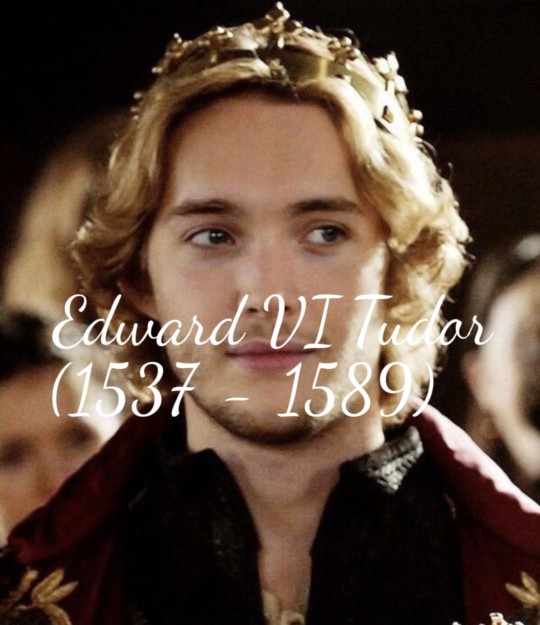





A happier life for Henry VIII's children: Part 3.
Edward was the son of King Henry VIII of England and his third wife Jane Seymour. The birth of a healthy boy was a great miracle and joy not only for his father, but for the whole of England. Edward's childhood was happy, because he had his own mother with him, who with her gentle voice could calm and support him. But it did not last long, in 1547 the boy had to grow up sharply and take on his children's shoulders the responsibility for the whole country, because his father Henry VIII died. His older sister Mary, Queen of France, became regent until the little king came of age. Mary ruled in her brother's place for 8 years. In addition, Mary and Jane did not allow the latter's brothers to influence the young king. Edward and Thomas Seymour were angry about this and they even tried to remove Mary from power, but they failed. The Queen of France uncovered the plot and sent them both to the Tower for life. In 1557 Mary's regency ended and she returned to France, and Edward became the rightful ruler of his state. Two years earlier the king had become interested in Protestantism, and secretly from his mother and sister he began to study it. At a council, he told his lords that he wished all England to convert to this religion, and most of his advisors supported his idea. The Queen Dowager of England tried several times to dissuade her son, but he became angry and made it clear that he would not allow her to interfere in his affairs of state. Queen Mary of France also did not lag behind and tried to return her brother to Catholicism and her attempts were not successful. But there were also those who disagreed, and because of this there were riots and rebellions in the country, the rioters demanded that the king left his venture and returned to the true faith. However, the king was not deterred by their demands, Edward managed to quell the rebellions and to appease his subjects, he declared in public that he would be tolerant and let them believe what they wanted. And to reconcile Catholics and Protestants, Edward promised to marry a Catholic princess, but their children would be Protestants, and to marry his other older sister Elizabeth to a Protestant. In 1558, the princess married the eldest son of the King of Sweden and left England for good. The king himself married Mary Stuart a year later. The marriage between the King of England and the Scottish Queen was a very successful and cohesive one. Mary appointed her consort as her companion and they lived on two countries.
Jane of England(1560 - 1618). Duchess of Angoulême. In 1578 she married her cousin Charles. Their married life was not a happy one. After the birth of their last child, the couple finally drifted apart and stopped living together. Four children were born in the marriage.
Henry IX of England(1561 - 1611). King of England, Ireland and Scotland. In 1589 he became King of England, and in 1600 of Scotland. In 1605 he proclaimed himself king of Great Britain. He was married, but did not love his wife, during their marriage he never touched her. Also the king had a mistress who bore him 5 children out of wedlock: Mary, Edward, Elizabeth, Grace and James. Died at the age of 51 of bubonic plague.
James I of England(1563 - 1627). King of Great Britain. Inherited from his older brother, as the latter had no legitimate children. Also, unlike Henry, he loved his wife and never cheated on her. Husband of Elizabeth of Denmark, father of 11 children: Edward VII, Sophia, Charles, George, Isabella, Joan, Frederick, Barbara, Henrietta, Arabella and Robert.
Mary of England(1564 - 1590). Mary was given in marriage to her cousin at the age of 18. The marriage produced 4 children. In 1590, Mary contracted pneumonia and died on the anniversary of her father's death.
Elizabeth of England(1567 - 1570). In 1570, the princess caught cold, contracted pneumonia and died at the age of 3.
Margaret of England(1569 - 1624). She was married twice, but both her husbands died shortly after the marriage. After the death of her second husband, Margaret declared that she would never marry again. She founded a charitable foundation and helped anyone in need, she especially focused on helping women and children.
Edward of England(1572 - 1586). Duke of Somerset and Albany. From birth had poor health. Died at the age of 14 from smallpox.
Richard of England(1575 - 1655). Duke of Somerset and Albany. After the death of his brother in 1586 all his titles passed to him. The Prince was noted for his good health and poetic ability. During his lifetime he became a famous poet. In 1600 he married Elizabeth Howard, after the wedding Richard and Elizabeth removed from the court and began to live a happy and quiet family life. The marriage produced 7 children: Mary, William, Edward, Philip, Anne, Catherine, and Nicholas.
Jane Seymour loved her daughter-in-law as her own daughter, the dowager queen liked to spend time in the circle of her grandchildren. On her son, she had almost no influence, but the king loved his mother and because of respect sometimes listened to her advice. Jane died in 1565, and Edward was greatly grieved by her death. Mary, more than anyone else, understood how her brother felt and despite their differences on matters of religion, came to England to give him moral support. In the end, they finally reconciled. Edward VI was a king beloved by the nobility and the people. For most of his reign, he tried to try on Catholics and Protestants and prevent religious warfare within the country. On top of that, the king gave shelter and protection to Protestants who had fled religious persecution. Edward VI died of tuberculosis in 1589. He was buried in Westminster Abbey next to his parents and other family members. Eleven years later, his wife Mary Stuart was buried next to him.
#english history#history#royal family#royalty#history au#au#royal#henryviii#the tudors#16th century#british royal family#edwardvi#marytudor#mary stuart#anne boleyn#catherine of aragon#elizabethi#elizabeth tudor#jane seymour
12 notes
·
View notes
Note
In the backstory of this character, she inherits a grand duchy when she’s about fifteen years old. This grand duchy has a larger and smaller kingdom bordering it to the north, another kingdom bordering it to the south and another to the east. The west boarder faces the open sea. (There are other kingdoms, but they don’t directly border the grand duchy.) The rulers of the larger northern kingdom and southern kingdom decide to have the girl marry the heir of the smaller northern kingdom and combine the grand duchy and kingdom together. (These three kingdoms are all different branches of the same dynasty and they just want to expand their dynastic power.) But the kingdom east of it, where the girl’s father/regent is from, wants to marry the girl to its heir in order to gain access to the port it has on its western boarder since they lost access to trade with the western half of the world after a war with the southern and northern kingdoms some years ago. The girl’s father hears of the other kingdoms’ plan and quickly has his daughter moved to eastern kingdom so she’s forcibly married to the heir. It’s forcible on her part since she did personally approve of marrying the smaller northern kingdom’s heir. Her duchy has a different religion from the east kingdom and some of the population of her duchy would not be treated well if they were a part of the east kingdom, while the smaller north kingdom is fairly similar to the grand duchy. But she gets married to the heir who becomes king a few years later. The grand duchy becomes a vassal of the east kingdom and there is some internal conflict because of that. They have some kids together and eventually he dies, leaving her eldest son to rule while he’s a minor. Now, she wants to get married to her original fiancé since he’s available and she hopes him and his allies would be able to help gain and maintain her duchy’s independence back. The issue is that she doesn’t want her children from her first marriage to inherit her duchy because she’s concerned about the idea of the duchy being connected to the east kingdom again, even if the child renounced their claim to the east kingdom’s throne. The questions I have about this is:
1. Could she make the grand duchy independent again as a regent to her son if she decides not to go through with the marriage to her original fiancé since I’m assuming she couldn’t be regent if she remarried the ruler of another kingdom.
2. If she did remarry the smaller kingdom’s ruler, would there be a way for her to disinherit her children from her first marriage and give the grand duchy to her children from that marriage?
Thank you and sorry for the long backstory.
It would be difficult, especially since the first marriage is made with the purpose of the kingdom gaining the Grand Duchy. Her child should not renounce their claim on the throne. Why would they? She could be Regent while the child is a minor and when they are fully grown, she can counsel them to any course she wants. She has given birth to her own salvation, she controls that kingdom. They don't have to fear that Kingdom anymore.
However, it may be difficult to challenge succession. Unless her children from her first marriage abdicate or the children from the first marriage are actually unable to succeed to foreign titles by a law of the eastern kingdom (which is a real thing and probably the best way to get yourself out of that corner) there's nothing she can do.
You should really look into the story of Isabella of Angoulême, she would be a great source of inspiration for you. Her life mirrors a lot of what you're writing about.
6 notes
·
View notes
Text
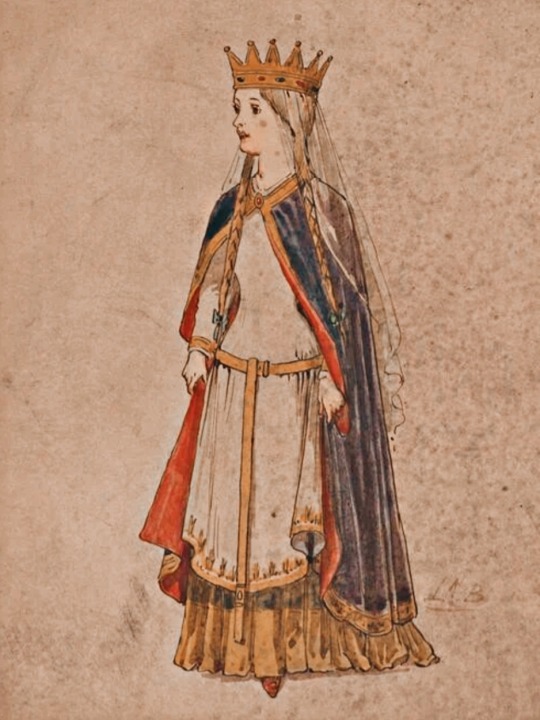
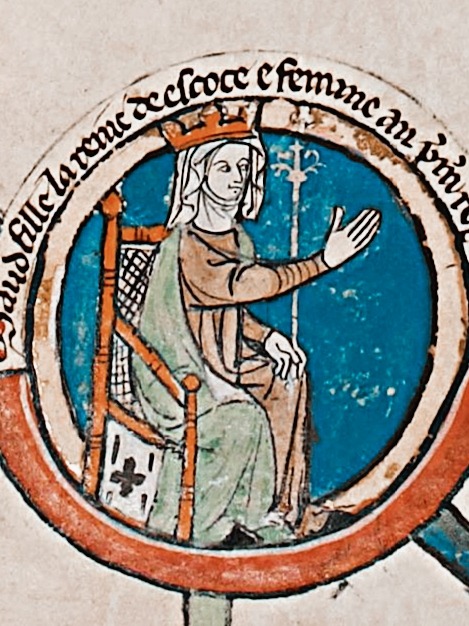
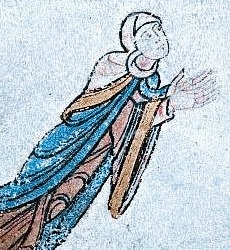
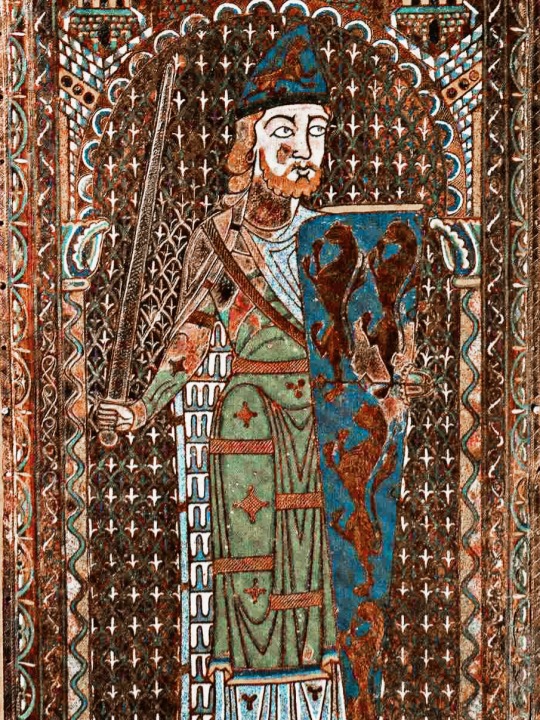
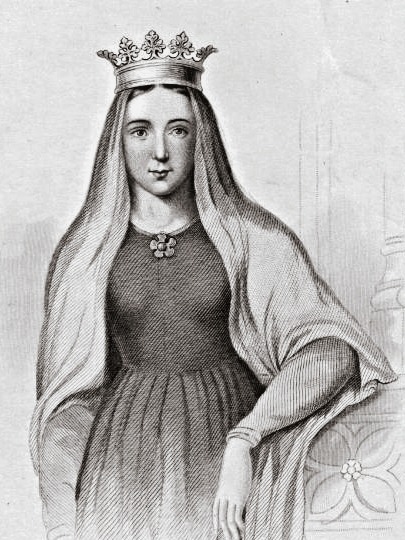



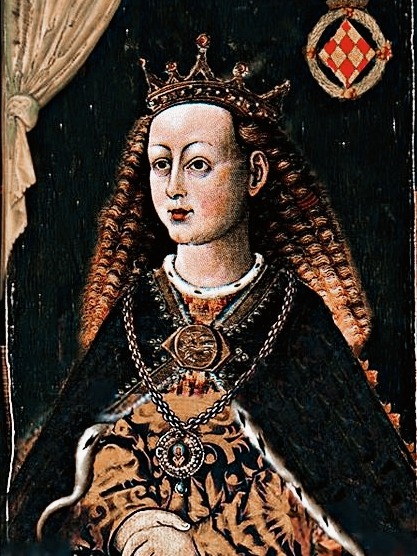
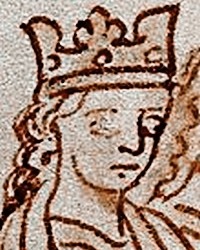
CONSORTS OF ENGLAND SINCE THE NORMAN INVASION (1/5) ♚
Matilda of Flanders (December 1066 - November 1083)
Matilda of Scotland (November 1100 - May 1118)
Adeliza of Louvain (January 1121 - December 1135)
Geoffrey V of Angou (April 1141 - 1148)
Matilda of Boulogne (December 1135 - May 1152)
Eleanor of Aquitaine (December 1154 - July 1189)
Margaret of France (1170 - June 1183)
Berengaria of Navarre (May 1191 - April 1199)
Isabella of Angoulême (August 1200 - October 1216)
Eleanor of Provence (January 1236 - November 1272)
#my photoset.#royal edit#history#historyedit#matilda of scotland#matilda of flanders#adeliza of louvain#geoffrey v#eleanor of aquitaine#margaret of france#berengaria of navarre#isabella of angouleme#eleanor of provence#british royal family#british royals#royals#royal#queens#historical royals#medieval ages#british royalty#historical royalty#consorts of england since norman invasion#english history#plantagenets#house of normandy#house of blois#plantagenet dynasty#consorts of england since norman invasion edit#consorts of england and britiain.
91 notes
·
View notes
Text
Blanche, Marguerite, and Queenship
Blanche's actions as queen dowager amount to no more than those of her grandmother and great-grandmother. A wise and experienced mother of a king was expected to advise him. She would intercede with him, and would thus be a natural focus of diplomatic activity. Popes, great Churchmen and great laymen would expect to influence the king or gain favour with him through her; thus popes like Gregory IX and Innocent IV, and great princes like Raymond VII of Toulouse, addressed themselves to Blanche. She would be expected to mediate at court. She had the royal authority to intervene in crises to maintain the governance of the realm, as Blanche did during Louis's near-fatal illness in 1244-5, and as Eleanor did in England in 1192.
In short, Blanche's activities after Louis's minority were no more and no less "co-rule" than those of other queen dowagers. No king could rule on his own. All kings- even Philip Augustus- relied heavily on those they trusted for advice, and often for executive action. William the Breton described Brother Guérin as "quasi secundus a rege"- "as if second to the king": indeed, Jacques Krynen characterised Philip and his administrators as almost co-governors. The vastness of their realms forced the Angevin kings to rely even more on the governance of others, including their mothers and their wives. Blanche's prominent role depended on the consent of her son. Louis trusted her judgement. He may also have found many of the demands of ruling uncongenial. Blanche certainly had her detractors at court, but she was probably criticsed, not for playing a role in the execution of government, but for influencing her son in one direction by those who hoped to influence him in another.
The death of a king meant that there was often more than one queen. Blanche herself did not have to deal with an active dowager queen: Ingeborg lived on the edges of court and political life; besides, she was not Louis VIII's mother. Eleanor of Aquitaine did not have to deal with a forceful young queen: Berengaria of Navarre, like Ingeborg, was retiring; Isabella of Angoulême was still a child. But the potential problem of two crowned, anointed and politically engaged queens is made manifest in the relationship between Blanche and St Louis's queen, Margaret of Provence.
At her marriage in 1234 Margaret of Provence was too young to play an active role as queen. The household accounts of 1239 still distinguish between the queen, by which they mean Blanche, and the young queen — Margaret. By 1241 Margaret had decided that she should play the role expected of a reigning queen. She was almost certainly engaging in diplomacy over the continental Angevin territories with her sister, Queen Eleanor of England. Churchmen loyal to Blanche, presumably at the older queen’s behest, put a stop to that. It was Blanche rather than Margaret who took the initiative in the crisis of 1245. Although Margaret accompanied the court on the great expedition to Saumur for the knighting of Alphonse in 1241, it was Blanche who headed the queen’s table, as if she, not Margaret, were queen consort. In the Sainte-Chapelle, Blanche of Castile’s queenship is signified by a blatant scattering of the castles of Castile: the pales of Provence are absent.
Margaret was courageous and spirited. When Louis was captured on Crusade, she kept her nerve and steadied that of the demoralised Crusaders, organised the payment of his ransom and the defence of Damietta, in spite of the fact that she had given birth to a son a few days previously. She reacted with quick-witted bravery when fire engulfed her cabin, and she accepted the dangers and discomforts of the Crusade with grace and good humour. But her attempt to work towards peace between her husband and her brother-in-law, Henry III, in 1241 lost her the trust of Louis and his close advisers — Blanche, of course, was the closest of them all - and that trust was never regained. That distrust was apparent in 1261, when Louis reorganised the household. There were draconian checks on Margaret's expenditure and almsgiving. She was not to receive gifts, nor to give orders to royal baillis or prévôts, or to undertake building works without the permission of the king. Her choice of members of her household was also subject to his agreement.
Margaret survived her husband by some thirty years, so that she herself was queen mother, to Philip III, and was still a presence ar court during the reign of her grandson Philip IV. But Louis did not make her regent on his second, and fatal, Crusade in 1270. In the early 12605 Margarer tried to persuade her young son, the future Philip III, to agree to obey her until he was thirty. When Philip told his father, Louis was horrified. In a strange echo of the events of 1241, he forced Philip to resile from his oath to his mother, and forced Margaret to agree never again to attempt such a move. Margaret had overplayed her hand. It meant that she was specifically prevented from acting with those full and legitimate powers of a crowned queen after the death of her husband that Blanche, like Eleanor of Aquitaine, had been able to deploy for the good of the realm.
Why was Margaret treated so differently from Blanche? Were attitudes to the power of women changing? Not yet. In 1294 Philip IV was prepared to name his queen, Joanna of Champagne-Navarre, as sole regent with full regal powers in the event of his son's succession as a minor. She conducted diplomatic negotiations for him. He often associated her with his kingship in his acts. And Philip IV wanted Joanna buried among the kings of France at Saint-Denis - though she herself chose burial with the Paris Franciscans. The effectiveness and evident importance to their husbands of Eleanor of Provence and Eleanor of Castile in England led David Carpenter to characterise late thirteenth-century England as a period of ‘resurgence in queenship’.
The problem for Margaret was personal, rather than institutional. Blanche had had her detractors at court. It is not clear who they were. There were always factions at courts, not least one that centred around Margaret, and anyone who had influence over a king would have detractors. They might have been clerks with misgivings about women in general, and powerful women in particular, and there may have been others who believed that the power of a queen should be curtailed, No one did curtail Blanche's — far from it. By the late chirteenth century the Capetian family were commissioning and promoting accounts of Louis IX that praise not just her firm and just rule as regent, but also her role as adviser and counsellor — her continuing influence — during his personal rule. As William of Saint-Pathus put it, because she was such a ‘sage et preude femme’, Louis always wanted ‘sa presence et son conseil’. But where Blanche was seen as the wisest and best provider of good advice that a king could have, a queen whose advice would always be for the good of the king and his realm, Margaret was seen by Louis as a queen at the centre of intrigue, whose advice would not be disinterested.
Surprisingly, such formidable policical players at the English court as Simon de Montfort and her nephew, the future Edward I, felt that it was worthwhile to do diplomatic business through Margaret. Initially, Henry III and Simon de Montfort chose Margaret, not Louis, to arbitrate between them. She was a more active diplomat than Joinville and the Lives of Louis suggest, and probably, where her aims coincided with her husband’s, quite effective.
To an extent the difference between Blanche’s and Margaret’s position and influence simply reflected political reality. Blanche was accused of sending rich gifts to her family in Spain, and advancing them within the court. But there was no danger that her cultivation of Castilian family connections could damage the interests of the Capetian realm. Margaret’s Provençal connections could. Her sister Eleanor was married to Henry III of England. Margaret and Eleanor undoubtedly attempted to bring about a rapprochement between the two kings. This was helpful once Louis himself had decided to come to an agreement with Henry in the late 1250s, but was perceived as meddlesome plotting in the 1240s. Moreover, Margaret’s sister Sanchia was married to Henry's younger brother, Richard of Cornwall, who claimed the county of Poitou, and her youngest sister, Beatrice, countess of Provence, was married to Charles of Anjou. Sanchia’s interests were in direct conflict with those of Alphonse of Poitiers; and Margaret herself felt that she had dowry claims in Provence, and alienated Charles by attempting to pursue them. Indeed, her ill-fated attempt to tie her son Philip to her included clauses that he would not ally himself with Charles of Anjou against her.
Lindy Grant- Blanche of Castile, Queen of France
#xiii#lindy grant#blanche of castile queen of france#blanche de castille#grégoire ix#innocent iv#raymond vii de toulouse#aliénor d'aquitaine#louis ix#philippe ii#guérin#louis viii#marguerite de provence#aliénor de provence#alphonse de poitiers#henry iii of england#philippe iii#jeanne i de navarre#philippe iv#simon de montfort#edward i of england#jean de joinville#sancia de provence#béatrice de provence#charles i d'anjou
15 notes
·
View notes
Text
Found Family Tournament [Round 1 - Poll 64/64]


(list of characters under the cut)
THE WITCHER
Geralt of Rivia
Dandelion
Milva
Emiel Regis
Cahir aep Caellach
Angoulême
PHINEAS AND FERB
Phineas Flynn
Ferb Fletcher
Candace Flynn
Isabella Garcia-Shapiro
Baljeet Tjinder
Buford Van Stomm
10 notes
·
View notes
Text

Louise of Savoy, Duchess of Angoulême and Regent of France.
Jean Clouet, ????
Married Charles of Orléans, she was the mother of the future king of France, Francis I, and Marguerite, Queen of Navarre. Her husband died in a riding accident - how strange, it’s the third I’ve read about today (the others being Mary of Burgundy and Prince Afonso of Portugal, first husband of Isabella of Aragon).
3 notes
·
View notes
Text
Events 8.24 (before 1930)
367 – Gratian, son of Roman Emperor Valentinian I, is named co-Augustus at the age of eight by his father.
394 – The Graffito of Esmet-Akhom, the latest known inscription in Egyptian hieroglyphs, is written.
410 – The Visigoths under King Alaric I begin to pillage Rome.
1185 – Sack of Thessalonica by the Normans.
1200 – King John of England, signer of the first Magna Carta, marries Isabella of Angoulême in Angoulême Cathedral.
1215 – Pope Innocent III issues a bull declaring Magna Carta invalid.
1349 – Six thousand Jews are killed in Mainz after being blamed for the bubonic plague.
1482 – The town and castle of Berwick-upon-Tweed is captured from Scotland by an English army.
1516 – The Ottoman Empire under Selim I defeats the Mamluk Sultanate and captures present-day Syria at the Battle of Marj Dabiq.
1561 – Willem of Orange marries duchess Anna of Saxony.
1608 – The first official English representative to India lands in Surat.
1643 – A Dutch fleet establishes a new colony in the ruins of Valdivia in southern Chile.
1662 – The 1662 Book of Common Prayer is legally enforced as the liturgy of the Church of England, precipitating the Great Ejection of Dissenter ministers from their benefices.
1682 – William Penn receives the area that is now the state of Delaware, and adds it to his colony of Pennsylvania.
1690 – Job Charnock of the East India Company establishes a factory in Calcutta, an event formerly considered the founding of the city (in 2003 the Calcutta High Court ruled that the city's foundation date is unknown).
1743 – The War of the Hats: The Swedish army surrenders to the Russians in Helsinki, ending the war and starting Lesser Wrath.
1781 – American Revolutionary War: A small force of Pennsylvania militia is ambushed and overwhelmed by an American Indian group, which forces George Rogers Clark to abandon his attempt to attack Detroit.
1789 – The first naval battle of the Svensksund began in the Gulf of Finland.[10]
1812 – Peninsular War: A coalition of Spanish, British, and Portuguese forces succeed in lifting the two-and-a-half-year-long Siege of Cádiz.
1814 – British troops capture Washington, D.C. and set the Presidential Mansion, Capitol, Navy Yard and many other public buildings ablaze.
1815 – The modern Constitution of the Netherlands is signed.
1816 – The Treaty of St. Louis is signed in St. Louis, Missouri.
1820 – Constitutionalist insurrection at Oporto, Portugal.
1821 – The Treaty of Córdoba is signed in Córdoba, now in Veracruz, Mexico, concluding the Mexican War of Independence from Spain.
1857 – The Panic of 1857 begins, setting off one of the most severe economic crises in United States history.
1870 – The Wolseley expedition reaches Manitoba to end the Red River Rebellion.
1898 – Count Muravyov, Foreign Minister of Russia presents a rescript that convoked the First Hague Peace Conference.
1909 – Workers start pouring concrete for the Panama Canal.
1911 – Manuel de Arriaga is elected and sworn in as the first President of Portugal.
1914 – World War I: German troops capture Namur.
1914 – World War I: The Battle of Cer ends as the first Allied victory in the war.
1929 – Second day of two-day Hebron massacre during the 1929 Palestine riots: Arab attacks on the Jewish community in Hebron in the British Mandate of Palestine, result in the death of 65–68 Jews; the remaining Jews are forced to flee the city.
0 notes
Text
Queen of England, Countess of Angoulême, mother of fourteen surviving children, Isabella of Angoulême was a woman who spent most of her life in a position of power. Her reputation was ultimately shaped by the failings of her husband. She became an easy target for misogynistic tropes and topoi deployed by monastic chroniclers interested in explaining John’s failures as King. Yet a more careful analysis of the surviving historical record reveals a Queen who was anything but vanished who, from the age of just 12, performed an active and important role at the royal court and who, even after the death of her first husband, continued to wield power and hold influence. Up until her death, Isabella acted in a way which suggests she fully understood how to wield power and expected to be afforded the dignity and reverence which her position as queen consort was due.
-Sally Spong, "Isabella of Angouleme: The Vanished Queen", "Norman to Early Plantagenet Consorts: Power, Influence and Dynasty"
#historicwomendaily#isabella of angouleme#angevins#13th century#english history#king john#ig#queue#my post
47 notes
·
View notes
Text

Margaret of Sicily (also called Margaret of Hohenstaufen or Margaret of Germany) (1 December 1241, in Foggia – 8 August 1270, in Frankfurt-am-Main) was a Princess of Sicily and Germany, and a member of the House of Hohenstaufen. By marriage she was Landgravine of Thuringia and Countess Palatine of Saxony.
She was the daughter of Frederick II, Holy Roman Emperor, King of Sicily and Germany, by his third wife, Isabella of England. Her paternal grandparents were Henry VI, Holy Roman Emperor and Constance of Sicily. Her maternal grandparents were John of England and Isabella of Angoulême.
#Margaret of Sicily#Margaret of Hohenstaufen#Margaret of Germany#House Hohenstaufen#XIII century#women in history
0 notes